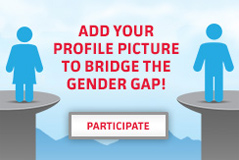Where We Are
Home to approximately 60 percent of the world’s population, the Asia-Pacific region is culturally, politically and economically diverse, with little sense of shared regional heritage beyond the respective sub-regions of South Asia, East/Southeast Asia and the Pacific. In spite of this diversity, the region shares common challenges of migration, increasing socio-economic disparities, a rise in catastrophic natural disasters, and diverse cultures with entrenched cultural norms which perpetuate gender-based discrimination and makes combating violence against women a continued challenge. Internal and cross-border conflicts and limited rule of law in more fragile states impact livelihoods in several countries across the region; while the risks of climate change threaten island states and coastal areas.
UN Women actively programmes in twenty two countries in the Asia Pacific Region, which folds in three sub-regional offices (South Asia, East and Southeast Asia and Pacific); eight nascent and existing country offices (Afghanistan, Bangladesh, Nepal, Pakistan, Cambodia, Vietnam, Timor Leste, PNG), with discussions now underway for a programme presence in Myanmar.
The work across the Asia-Pacific portfolio may be summarised as follows:
- Strengthening the adoption, implementation and monitoring of legal frameworks, political party platforms and election bodies in support of women’s increased participation in decision making at the national and local level, including ensuring increase in women as voters;
- Promotion of economic empowerment and security of excluded women, including women home-based workers, Migrant Women Workers, domestic workers, rural women, and women market vendors;
- Legislative reform including monitoring, to combat VAW and girls at the national and provincial level; and Support to implementation of legal frameworks, including support to the global Critical Services Initiative; Safe Cities programme; and direct support in the provision of services for women escaping violence;
- Women’s engagement in DRR, peace, mediation, and reconstructions efforts; and strengthening access to and gender responsiveness of relief, recovery and disaster risk management at national and provincial levels;
- Strengthen gender responsive budgeting and planning processes at all levels, including improved monitoring, including supporting the monitoring of the impact of policies on women and men; supporting implementation of the CEDAW.

